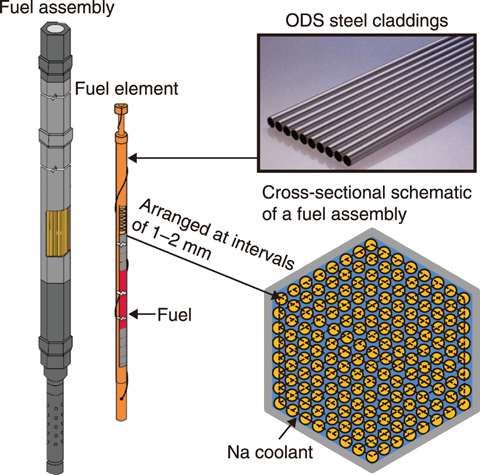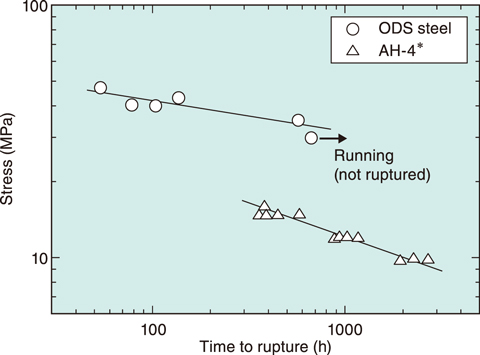
Fig.7-10 Fuel assembly and fuel element of a fast reactor

Fig.7-11 Creep rupture tests of ODS steel at 1000 ℃
A fuel element is manufactured by filling a nuclear fuel with fuel cladding and sealing both ends with end plugs. The fuel claddings trap not only nuclear fuel, which produces high-density energy by nuclear fission in the nuclear reactor, but radioactive materials produced by this nuclear fission, as well. They also have the important safety function of maintaining the coolant flow path to cool the exoergic nuclear fuels (as shown in Fig.7-10).
Oxide dispersion strengthened (ODS) steels have been under development as a fuel cladding for SFRs by JAEA. It has been clarified that ODS steel has the highest creep strength level near the maximum operating temperature (about 700 ℃) in the world and to be effective for the high burnup fuel claddings of SFRs. To further clarify the safety of ODS steel and ensure the prevention of severe accidents and of the release of radioactive materials to the environment, it is necessary to evaluate its tolerance for deformation and destruction at ultra-high temperatures exceeding 700 ℃.
Creep rupture tests of ODS steel claddings were therefore performed at 1000 ℃, the results of which are as shown in Fig.7-11, where they are compared with those of heat-resistant austenitic steel (AH-4)* developed by a Japanese steel company for use up to temperatures ≥ 1000 ℃. The creep rupture strength of ODS steel was much higher than that of AH-4 even at 1000 ℃, even though the strength of ferritic steels is known to be was lower than that of austenitic steels at high temperatures. These data demonstrated the superior creep rupture strength of ODS steel at 1000 ℃. Further, the change in outer diameter of the ODS steel was much smaller (less than a few percent), thus indicating that its resistance to deformation was much higher than that of austenitic steels. These results thus demonstrate the strong tolerance of ODS steel to ultra-high temperature rupture and deformation. In addition, temperature-transient-to-burst tests, which has been used for evaluating the strength of claddings in transient events such as loss-of-flow (temperature is increased in a short time from several hundred to around 1000 ℃), were also carried out. As the result, the validity of the design analysis method suggests that the life fraction rule could be used for rupture life prediction of ODS steel claddings in transient and accident events with a certain accuracy.
In the future, it will acquire data on the mechanical properties of ODS steels under various conditions required for design and analysis, including at temperature range ≥1000 ℃, to contribute to the continual safety improvement of SFRs. Therefore, JAEA will continue research and development of ODS steels to carry out technological feasibility assessments.
This study is part of the results conducted on “R&D of ODS ferritic steel fuel cladding for maintaining fuel integrity at the high temperature accident condition” entrusted to Hokkaido University, supported by the Ministry of Education, Culture, Sports, Science and Technology (MEXT), Japan. JAEA was subcontracted by Hokkaido University to carry out the research.
(Yasuhide Yano)
* Yamamoto, S. et al., Heat-Resistant Austenitic Stainless Steel, Nippon Steel & Sumitomo Metal Technical Report, no.106, 2014, p.96–102.